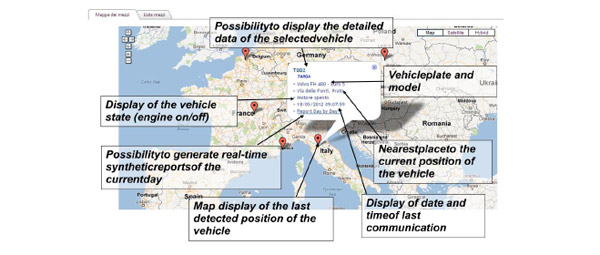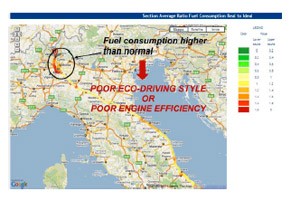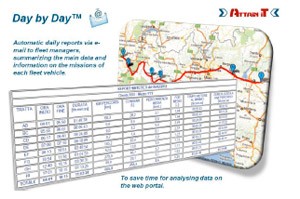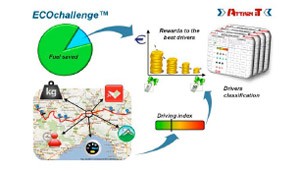AN ON-BOARD PLATFORM TO HELP FUEL CONSUMPTION OPTIMIZATION AND FLEET MANAGEMENT
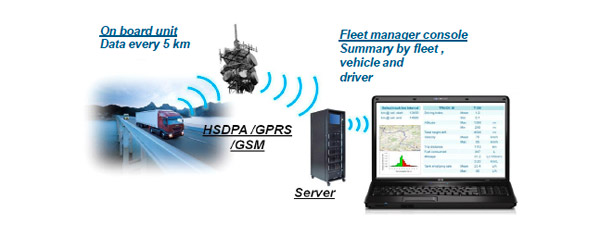
OVERVIEW
Fuel Consumption Monitoring is an on-board platform of the ADTS (Attain IT Driver Tutor Suite), to be installed as a cockpit software or PDA add-on, to help transport vehicles fleet managers and drivers in saving fuel. It can be installed on any vehicle (trucks, coaches, buses, light duty vehicles etc.)
The system consists in an on board unit to assist the driver and offline tools for analysing fuel consumption considering diverse road paths and parts thereof.
The on board tool provides indication to the driver assigning a fuel consumption score associated to his/her personal driving style and, for example, an automatic acoustic warning can be generated if the fuel consumption exceeds certain thresholds or is unusual for the driven road and vehicle loading conditions.
HARDWARE
The Fuel Consumption Monitoring software can operate on different hardware platforms, in particular Attain IT's CAN ROP Type I and Type III, which include:
- the connection through a suitable interface with the CAN bus (Control area Network) of the vehicle;
- a GPS receiver for vehicle localization;
- the dispatch of the data to a central station through FTP server connection via HSDPA/UMTS (if a subscription for a data SIM is foreseen) or via WiFi (if available, e.g.at the terminals).
ON BOARD FUNCTIONING
Fuel Consumption Monitoring operates on board by comparing the actual fuel consumption with a real time estimation of a fuel saving driving style, for the same vehicle mission and road.
The system provides an immediate feedback to the driver when irregular patterns or high fuel consumption are detected.
Visual and/or acoustic warnings are given to the driver via a coloured indicator or an external touch screen encouraging him/her to adopt a consistent driving style.
For vehicles in which a CANbus connection cannot be provided Fuel Consumption Monitoring uses the information available from the PDA or smartphone and GPS to evaluate a driving irregularity index that is associated to an increase in fuel consumption, according to an extensive experimental database.
MINIMUM FUEL CONSUMPTION ESTIMATION
The minimum fuel consumption estimation exploits the signals coming from the CAN bus network of the vehicle. Among those there are the kinematics and the control signals, by means of which it is possible to compute the forces the vehicle is subject to, which are taken into consideration for the optimization of fuel consumption.
For example, it allows distinguishing between similar fuel consumption cases, respectively characterised by a consistent behaviour with a fully-loaded vehicle and an inefficient behaviour with an empty one.
FLEET MANAGEMENT
Fuel Consumption Monitoring allows an effective fleet management through the simultaneous analysis of data transmitted periodically to a central fleet management station. The on board systems of each vehicle of the fleet transmit at regular intervals or on predefined event types data concerning fuel consumption, driving style and GPS position, which allow the vehicle localization on maps and the associated fuel consumption.
The central data collection allows the elaboration of statistics about drivers’ fuel economy style and a fuel saving oriented management of vehicles fleets. Both can be used by companies to encourage and prize measurable saving results.
In addition, the engine performance can be monitored in order to avoid incipient failures or unnecessary maintenance.
FUEL THEFT DETECTION
Fuel Consumption Monitoring finally allows detecting potential fuel thefts, since it is possible to compute (by a qualified confidence level) the total fuel used in a specific mission and to make a comparison with the total fuel paid at the refuelling stations. Any significant deviation can thus be easily detected.
